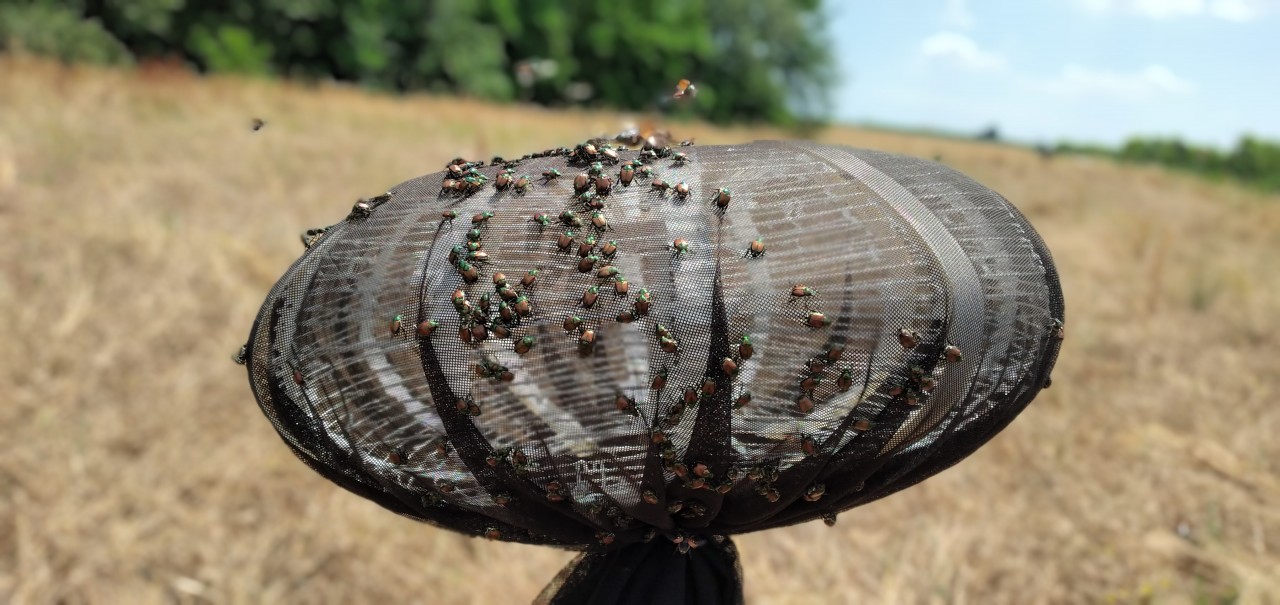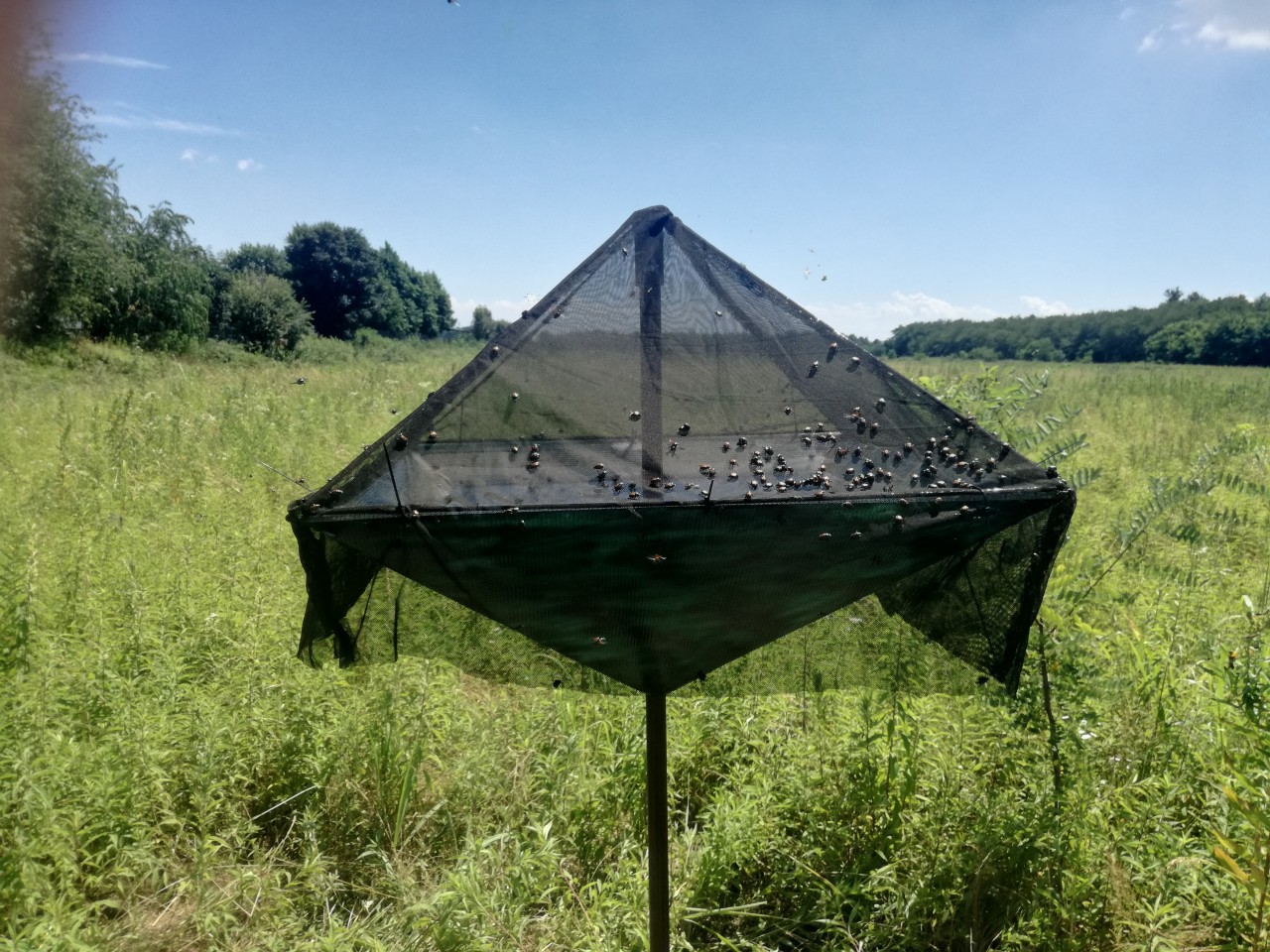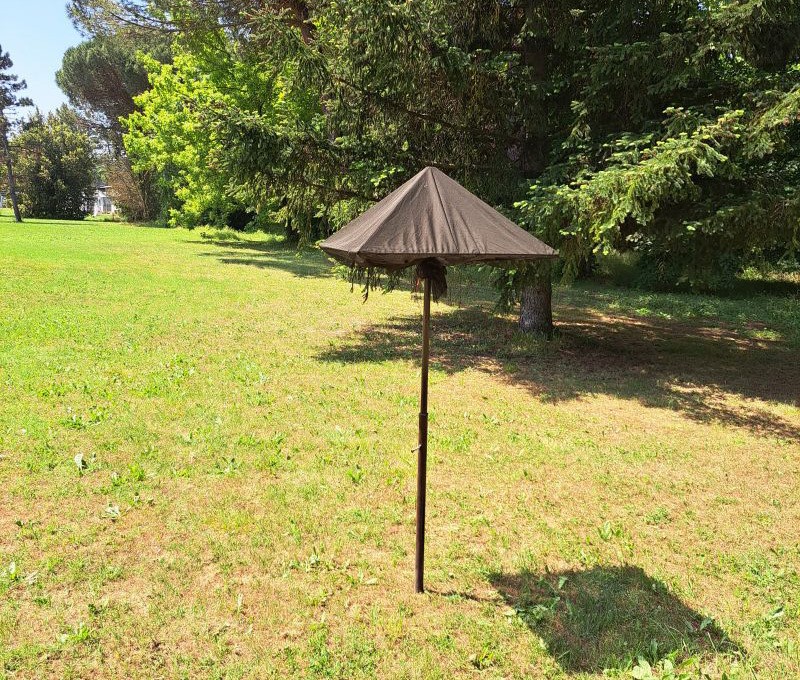Some years ago, when I was in Kenya to carry out a part of my PhD program on the adaptations to terrestrial life in fiddler crabs, I slept in a bed protected by an insecticide net that prevented from mosquitos' bites and related diseases. At that time I would have never thought that one day I would have used them in my research!
Nets as a low impact method
Indeed, one of the task of the IPM POPILLIA project in charge to CREA is to test the effectiveness of long-lasting insecticide-treated nets as a low-impact method to control P. japonica adult. This method limits the spread of chemicals over crops and requires a minimal management.
In our laboratory tests we observed that insecticide nets were very effective in killing beetles: a tarsal contact of 5 seconds between insects and net guaranteed an insect mortality ranging between 90 to 100% in base of the net used.
Attract-and-Kill devices (A&K)
To verify in the field the efficacy of the laboratory outcomes, we built attract-and-kill devices (A&K) made of the insecticide net mounted on a frame and baited with the double lure semiochemical. We tested several forms of A&Ks and measured how long the device could be considered effective over the insect's flight season. In the end we evaluated the use of A&K under certain conditions as an important tool to slow down the spread of P. japonica in infested territories.
Author
Francesco Paoli, PhD
CREA DC: Consiglio per la Ricerca in Agricoltura e l'analisi dell'Economia Agraria
Centro di ricerca Difesa e Certificazione
Via di Lanciola 12/a, 50125 Firenze - Italy
Additional information can be found here:
Paoli, F., Iovinella, I., Barbieri, F., Sciandra, C., Sabbatini Peverieri, G., Mazza, G., Torrini G, Barzanti GP, Benvenuti C, Strangi A, Bosio G, Mori E, Roversi PF & Marianelli, L. (2023). Effectiveness of field‐exposed attract‐and‐kill devices against the adults of Popillia japonica (Coleoptera: Scarabaeidae): a study on duration, form and storage. Pest Management Science. https://doi.org/10.1002/ps.7504


